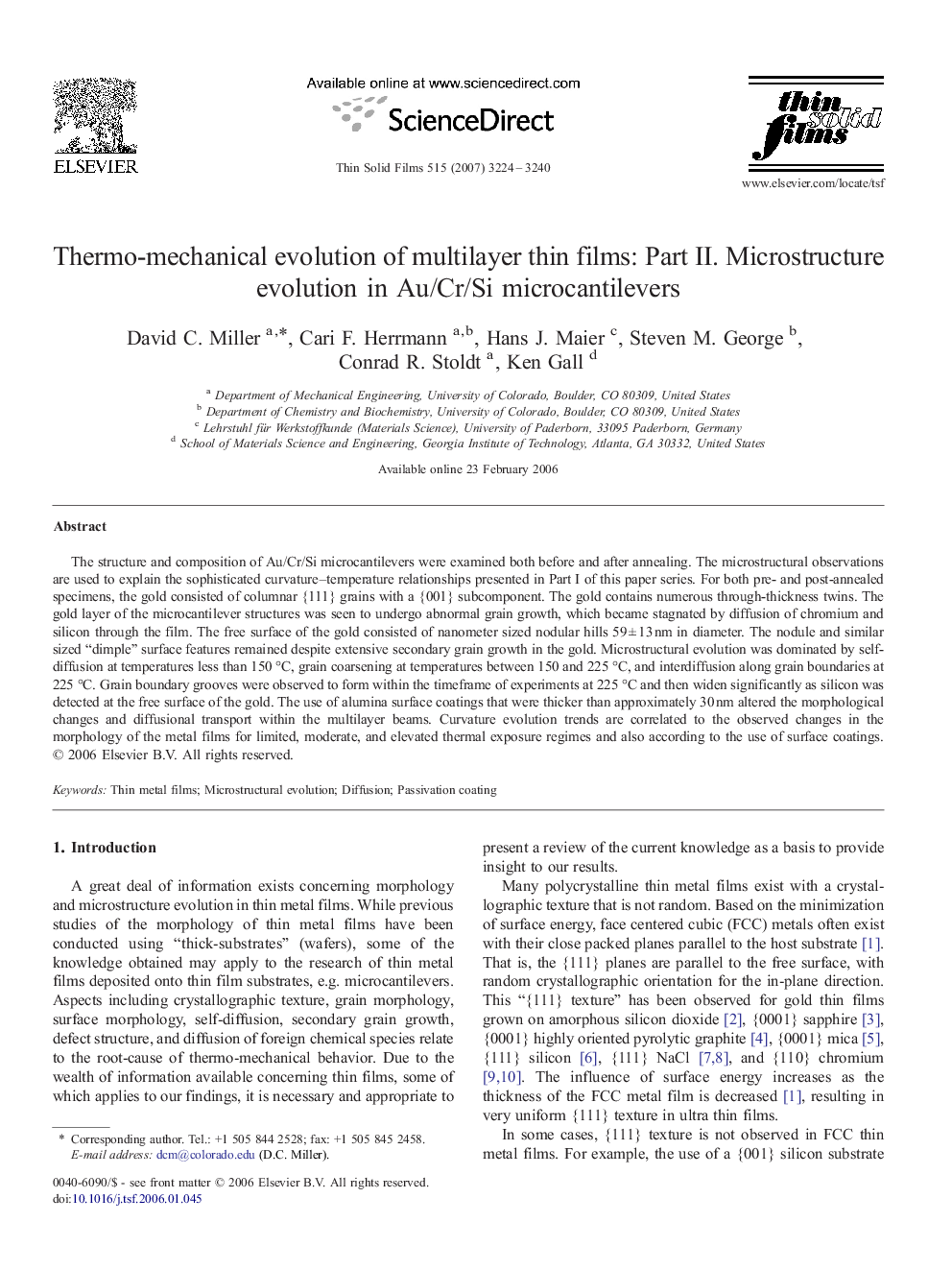| Article ID | Journal | Published Year | Pages | File Type |
|---|---|---|---|---|
| 1676585 | Thin Solid Films | 2007 | 17 Pages |
The structure and composition of Au/Cr/Si microcantilevers were examined both before and after annealing. The microstructural observations are used to explain the sophisticated curvature–temperature relationships presented in Part I of this paper series. For both pre- and post-annealed specimens, the gold consisted of columnar {111} grains with a {001} subcomponent. The gold contains numerous through-thickness twins. The gold layer of the microcantilever structures was seen to undergo abnormal grain growth, which became stagnated by diffusion of chromium and silicon through the film. The free surface of the gold consisted of nanometer sized nodular hills 59 ± 13 nm in diameter. The nodule and similar sized “dimple” surface features remained despite extensive secondary grain growth in the gold. Microstructural evolution was dominated by self-diffusion at temperatures less than 150 °C, grain coarsening at temperatures between 150 and 225 °C, and interdiffusion along grain boundaries at 225 °C. Grain boundary grooves were observed to form within the timeframe of experiments at 225 °C and then widen significantly as silicon was detected at the free surface of the gold. The use of alumina surface coatings that were thicker than approximately 30 nm altered the morphological changes and diffusional transport within the multilayer beams. Curvature evolution trends are correlated to the observed changes in the morphology of the metal films for limited, moderate, and elevated thermal exposure regimes and also according to the use of surface coatings.
